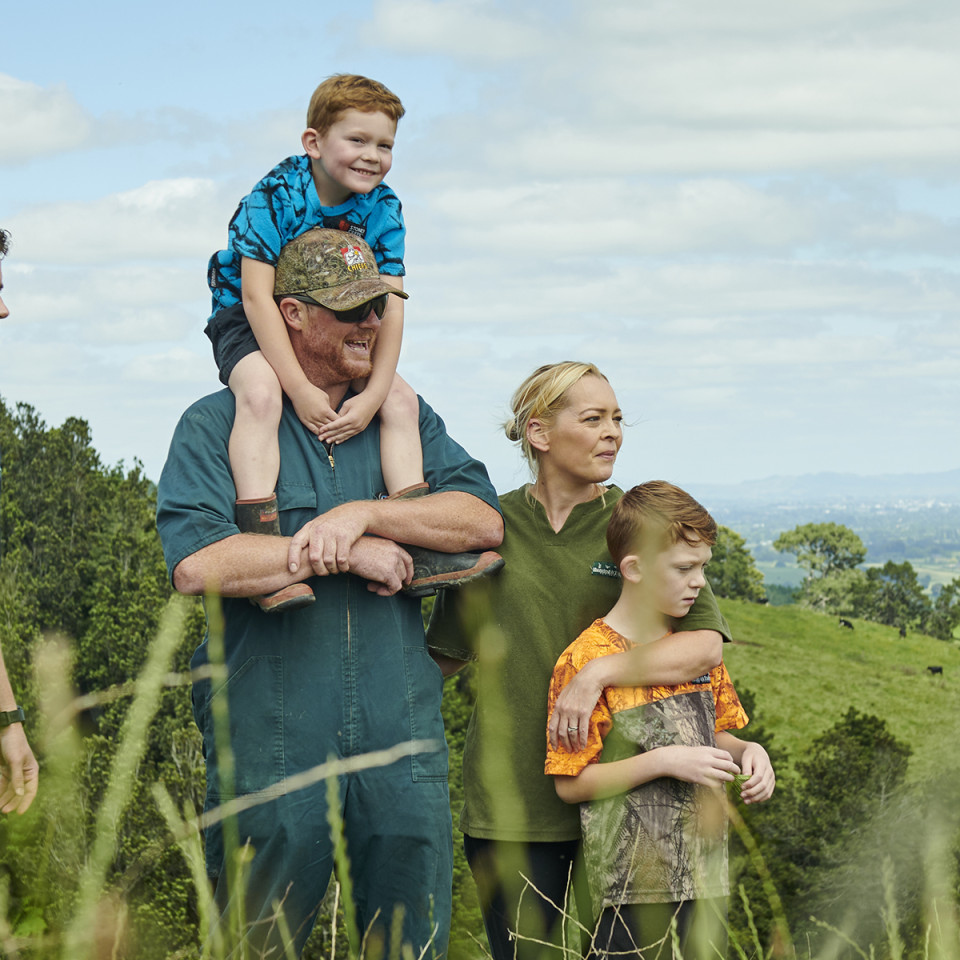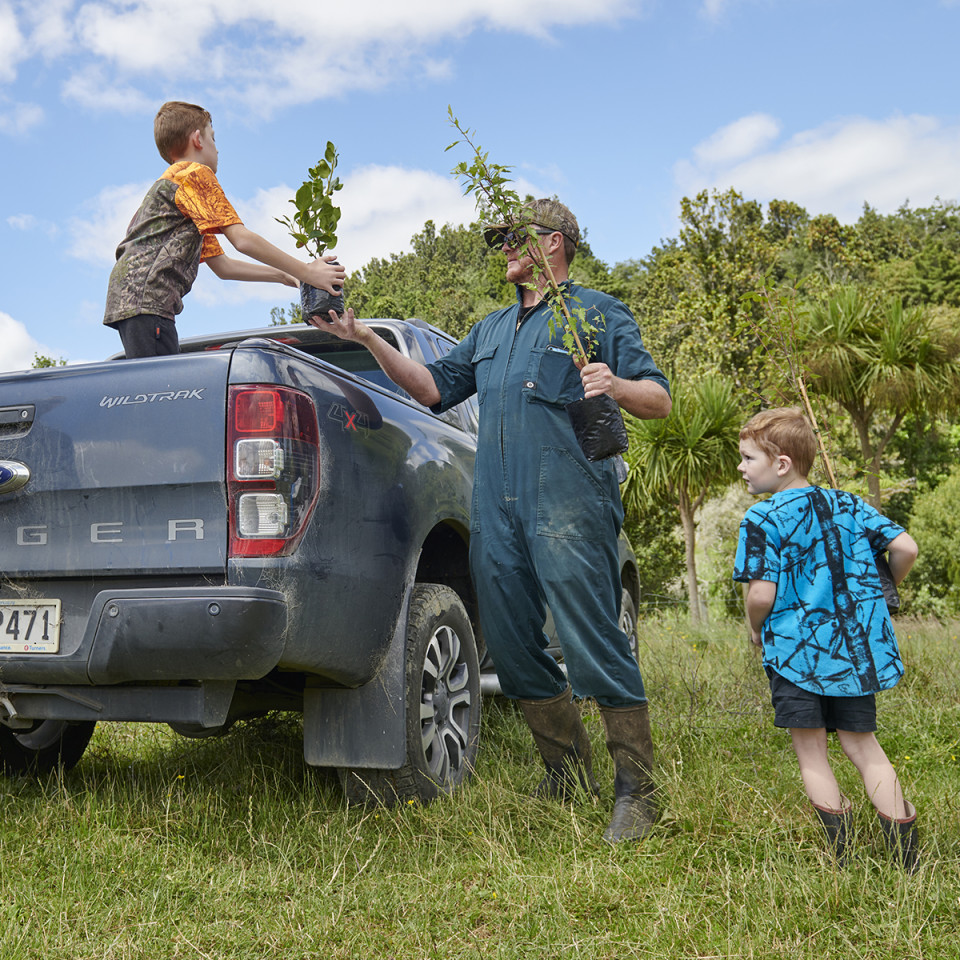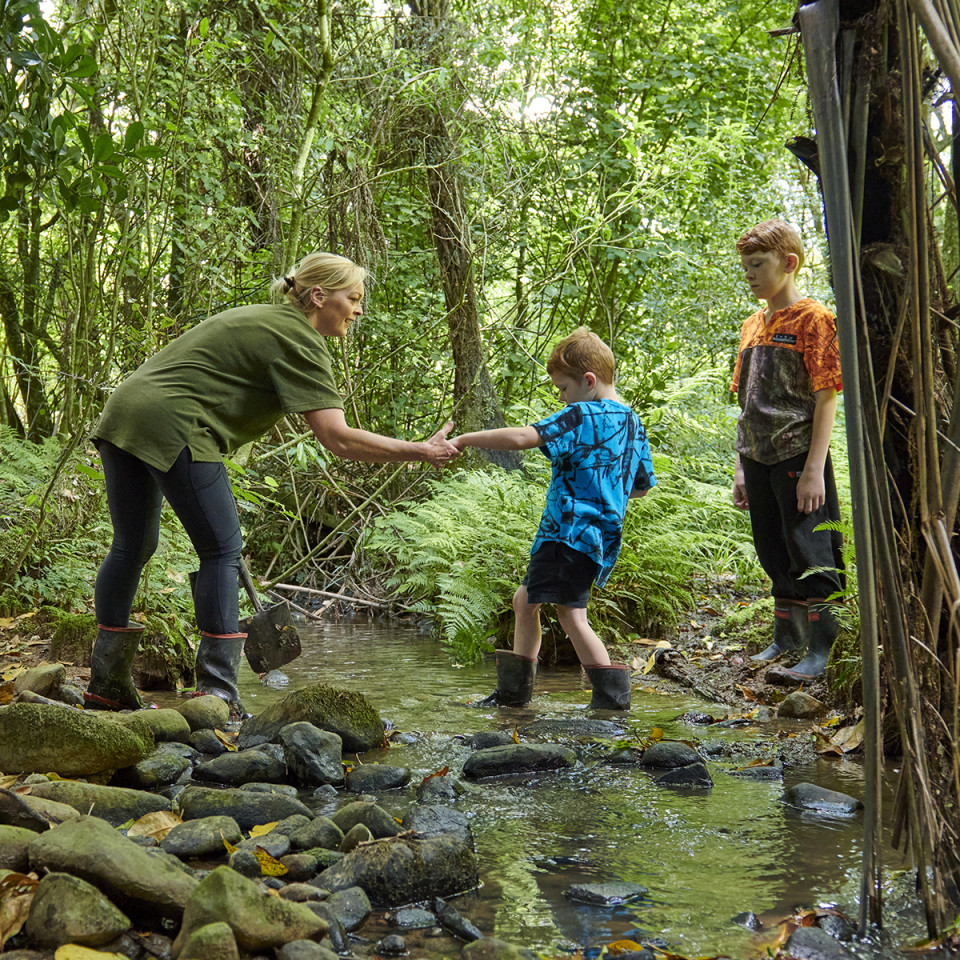Not Your Typical Dairy Farmers
It’s fair to say the Olivers are not typical dairy farmers. Their backyard is home to 93 egg-laying ducks. They’ve befriended bees and run a dozen hives. They spend time and money protecting on-farm long-tailed bats. And they make time to milk 180 cows.
Greg and Katrina are Open Country suppliers. Their farm, nestled between Hamilton and Matamata, is small and oddly sized – 100 hectares that is two paddocks wide from road front to final fence. Katrina explains how she and Greg came to own this unique strip of land.
“I was raised on this farm – it’s been in our family for 100 years – but I left it to start a career in landscaping. I was qualified and self-employed, which is how I met Greg. We were doing a landscaping job together, and we hit it off.
“Our journey back to farming happened through my parents. Being fourth generation dairy farmers, they were keen to keep the land in family hands, but at the time, they’d leased their farm out. When those folk moved on, mum and dad invited Greg to work on the farm so he could come to grips with the operation. That’s when we bought in.”
Katrina’s parents had been with Fonterra up until the time of leasing the farm. The new people, however, couldn’t afford Fonterra’s share options, so opted to go with Open Country to make it work. As it turned out, this was perfect for the Olivers.
“When Greg and I were ready to buy, we were in the same financial boat as the previous people – unable to afford Fonterra’s shares. So it made sense for us to keep everything with Open Country. We’re so glad we did. Now we have a stake in the land!”


